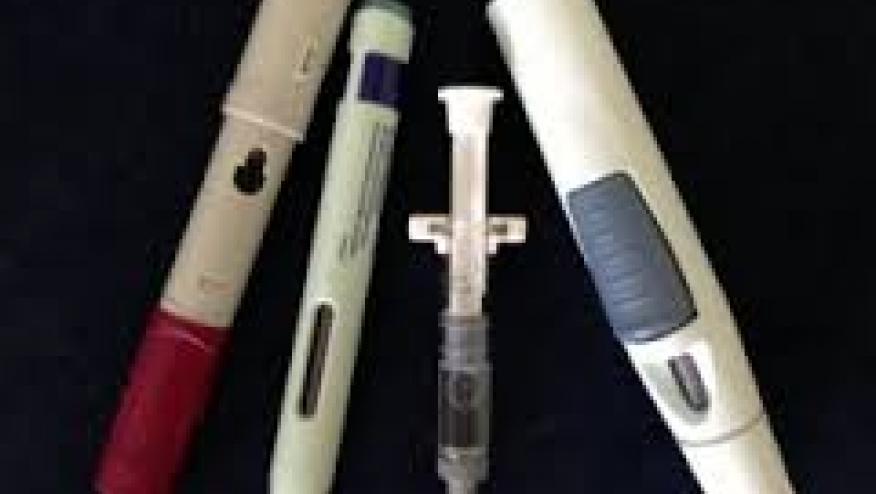Start with Anti-TNF in RA? Not So Fast Save

The suggestion to hit rheumatoid arthritis (RA) early and hard with biologic therapies itself took a hit in a new study.
Use of first-line etanercept (Enbrel) plus methotrexate in very early RA was not associated with a substantially higher rate of remission compared with a strategy of treat-to-target methotrexate monotherapy, a randomized open-label trial found.
Among patients recruited within one year of symptom onset, the expected remission rates (based on an exploratory analysis of a previous study known as COMET) of 70% and 40% for the etanercept plus methotrexate and methotrexate alone groups, respectively, were not met, according to Maya H. Buch, MBChB, PhD, of the University of Leeds in England, and colleagues.
Rather than this expected 30% difference, the remission rates at week 48, which was the study's primary endpoint, were 52% versus 38% for the two groups (OR 1.73, 95% CI 0.81-3.70, P=0.160), which was only a 14-point difference, the researchers reported in Annals of the Rheumatic Diseases.
The current aim of treatment in RA is reaching remission or low disease activity rapidly to prevent irreversible joint damage and maintain quality of life. And while biologic treatments typically have more dramatic efficacy than conventional disease-modifying antirheumatic drugs (DMARDs), whether biologics should be used first line remains uncertain and guidelines generally recommend conventional DMARDs as the initial treatment.
However, because of the striking differences in efficacy seen in the post-hoc analysis of COMET, Buch and colleagues conducted a prospective single-center trial that included 120 patients who had no previous DMARD treatment and whose symptom duration was less than 12 months.
In the combination therapy group, subcutaneous etanercept and oral methotrexate were initiated in respective dosages of 50 mg and 15 mg weekly, with the methotrexate subsequently being increased to 20 mg and 25 mg per week at weeks 4 and 8.
In the group initiating methotrexate as monotherapy but following a treat-to-target strategy, sulfasalazine and hydroxychloroquine were added if the Disease Activity Score in 28 joints (DAS28) was not below 3.2 at weeks 8, 12, 16, or 20. At week 24, if the DAS28 remained at 2.6 or higher, etanercept was added to the methotrexate, and sulfasalazine and hydroxychloroquine were stopped.
Participants' mean age was 50, and the majority were women. Median symptom duration was 20 weeks, and baseline DAS28 was 5.7, which indicates high disease activity. Almost three-quarters of patients already had erosive disease.
The study also had various secondary endpoints, with similar results being seen in the two groups although more rapid responses typically occurred with the tumor necrosis factor (TNF) inhibitor.
At week 12, 39% of the etanercept combination group were in remission compared with 17% of the methotrexate group (OR 3.18, 95% CI 1.35-7.50), but by week 24, remission rates were similar in the two groups. Also at week 12, moderate or good responses according to the criteria of the European League Against Rheumatism were seen in 92% of the etanercept group compared with 75% of the methotrexate group (OR 3.59, 95% CI 1.21-10.66), but by week 48, there was no significant difference (94% vs 89%, OR 1.88, 95% CI 0.43-8.18).
Similarly, 20% improvements on the criteria of the American College of Rheumatology were seen in 75% of the etanercept group compared with 55% of the methotrexate group at week 12 (OR 2.45, 95% CI 1.10-5.46), but at week 48, again there was no significant difference (83% vs 73%, OR 1.79, 95% CI 0.69-4.60).
Among patients who started on methotrexate but added etanercept at 24 weeks, the adjusted odds ratio for achieving remission after an additional 24 weeks was a nonsignificant 2.84 (95% CI 0.84-9.60) compared with those who received etanercept first line.
For patient-reported outcomes, including functional improvement and quality of life, there were no significant differences between the groups throughout the study.
In both groups, the proportion of patients with ultrasound power Doppler scores above zero declined to 15% by week 12 and remained below 13% at week 48. More than half of patients in each group had ultrasound Gray scale scores above zero through week 48.
The total number of adverse events in the etanercept and methotrexate groups were 413.6 and 509.6 per 100 patient-years, respectively, and serious adverse events were reported in 10.6 and 5.9 per 100, respectively.
"In summary, the VEDERA study did not demonstrate the larger than standard effect size (of 30%), which was proposed to exist in a previous exploratory subgroup analysis with first-line TNF inhibitor/methotrexate in very early RA," Buch and colleagues concluded.
"These data also highlight a ceiling effect in achieving remission in a real life comorbid early RA cohort," they added.
A limitation of the study was its open-label design.
The study was funded by Pfizer.
The authors reported financial relationships with Pfizer, Merck Sharp & Dohme, AbbVie, Bristol-Myers Squibb, UCB, Roche, Novartis, Samsung, Sandoz, Eli Lilly, EMD Serono, Sanofi, Amgen, Astellas, AstraZeneca, Boehringer Ingelheim, Celgene, Cyxone, Daichii, Eisai, Galapagos, Gilead, GlaxoSmithKline, Janssen, Regeneron, Roche, and Takeda.









If you are a health practitioner, you may Login/Register to comment.
Due to the nature of these comment forums, only health practitioners are allowed to comment at this time.